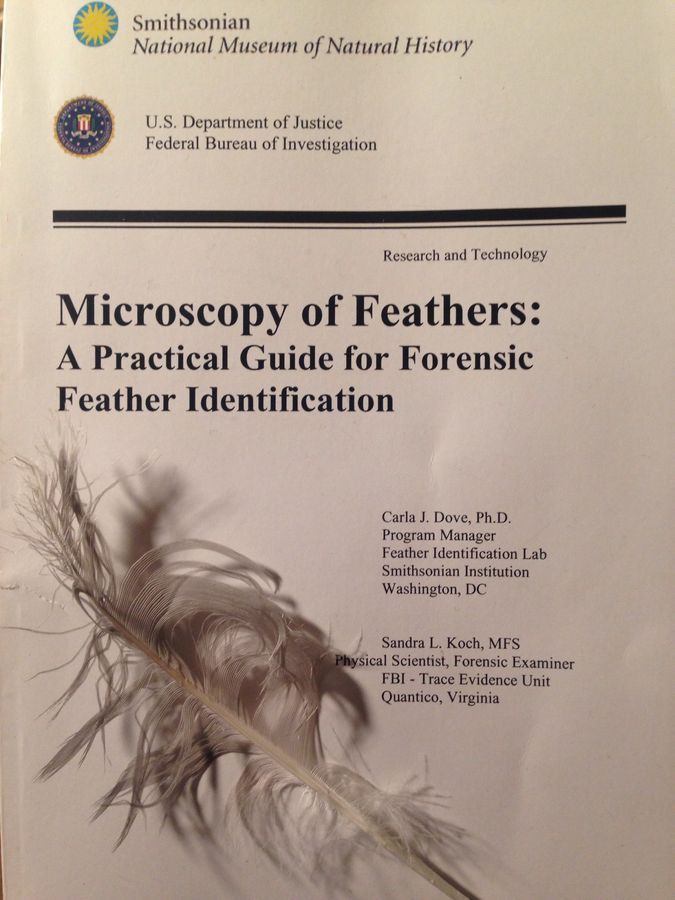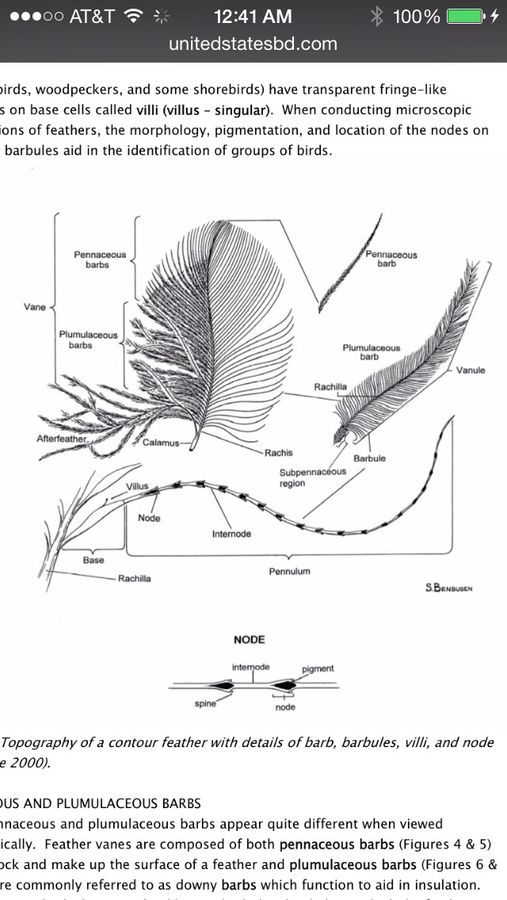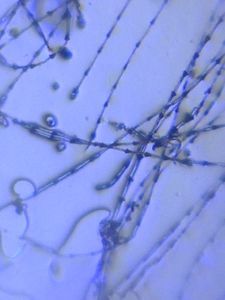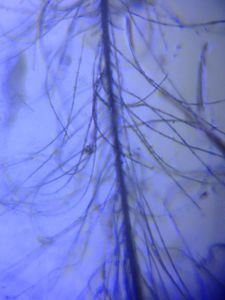Bird Feather Forensics – Know a bird from a micro-feather
 Nov 20, 2014 • 8:53 AM UTC
Nov 20, 2014 • 8:53 AM UTC Unknown Location
Unknown Location 140x Magnification
140x Magnification Microorganisms
Microorganisms
Manu Prakash
I am a faculty at Stanford and run the Prakash Lab at Department of Bioengineering at Stanford University. Foldscope community is at the heart of our Frugal Science movement - and I can not tell you how proud I am of this community and grassroots movement. Find our work here: http://prakashlab.stanford.edu
266posts
1192comments
42locations

Summary: Feathers are hierarchical structures. Looking at the smaller length scales, it’s possible to identify specific birds from just a lone feather.
Bird feathers are fascinating objects. Not only do we have little understanding of how feathers develop, we know only a little bit how feathers enhance flight mechanics in birds. Walking around both in urban and natural landscapes, stumbling upon a feather is commonplace. Have you wondered if some “magic barcode” existed on every feather that could tell you what species it is from – well almost. A perfect foldscope project.
The story of this post begins when I accidentally met Dr Dove from Smithsonian Museum of Natural History in DC. Not only did she show me a stuffed passenger pigeon (extinct for some time now); she also handed me this little booklet that she wrote about speciation of birds just using feathers. We can at least identify which group does the bird belong to.
Bird feathers are fascinating objects. Not only do we have little understanding of how feathers develop, we know only a little bit how feathers enhance flight mechanics in birds. Walking around both in urban and natural landscapes, stumbling upon a feather is commonplace. Have you wondered if some “magic barcode” existed on every feather that could tell you what species it is from – well almost. A perfect foldscope project.
The story of this post begins when I accidentally met Dr Dove from Smithsonian Museum of Natural History in DC. Not only did she show me a stuffed passenger pigeon (extinct for some time now); she also handed me this little booklet that she wrote about speciation of birds just using feathers. We can at least identify which group does the bird belong to.

My love for feathers goes a little bit longer – bumping into Dr. Rick Prum at the Yale Museum of Natural History. That story for another time.. But I was baffled by the fact that every feather might contain a microscopic barcode to identify different species of birds. Dr.Dove’s work also involves identifying birds from plane wreckage of an engine is hit by a bird (it’s more common compared I what you might think). I wonder if engine makers will actually test an engine by throwing a chicken in it.. Maybe not such a good idea. Let’s find out how to identify birds using feathers.
Method:
1. First get a copy of the booklet (link here, starts with page 15, PDF) ; which demonstrates what microscopic patterns correspond to what bird group. This is important – since you want to compare the feather to a known pattern (akin to a hash table).
2. Find barbules and mount the same in the tape based slide (use Foldscope slide)
Method:
1. First get a copy of the booklet (link here, starts with page 15, PDF) ; which demonstrates what microscopic patterns correspond to what bird group. This is important – since you want to compare the feather to a known pattern (akin to a hash table).
2. Find barbules and mount the same in the tape based slide (use Foldscope slide)

3. Mount your sample and observe. The contrast is excellent, since some of the feathers absorb light quiet well.
Results and observations:
1. I was thrilled to see the microstructures in barbules immediately. The first time you see it; it makes you perplexed since the microstructure is very fine – but I can’t give any evolutionary structure for that selection.
Results and observations:
1. I was thrilled to see the microstructures in barbules immediately. The first time you see it; it makes you perplexed since the microstructure is very fine – but I can’t give any evolutionary structure for that selection.



Next steps:
I abruptly stopped this experiment. I will continue to match the node pattern on the barbules in above pictures to the my PDF guide to declare what species I think the particular feather comes from.
I have also been very curious about what is the role of this microstructure and why is it so specific to the species. Until next time..
I abruptly stopped this experiment. I will continue to match the node pattern on the barbules in above pictures to the my PDF guide to declare what species I think the particular feather comes from.
I have also been very curious about what is the role of this microstructure and why is it so specific to the species. Until next time..
Sign in to commentNobody has commented yet... Share your thoughts with the author and start the discussion!

 0 Applause
0 Applause 0 Comments
0 Comments
















